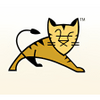An application that allows users to manage their internet and network security and connections
An application that allows users to manage their internet and network security and connections
Vote: (1 votes)
Program license: Paid
Developer: The Apache Software Foundation
Version: 7.0.82
Works under: Windows
Vote:
Program license
(1 votes)
Paid
Developer
Version
The Apache Software Foundation
7.0.82
Works under:
Windows
Pros
- Open-source with a strong community background
- Supports modern Jakarta EE and legacy Java EE specifications
- Modular and component-based architecture
- Conducive to enterprise-level application deployment
- Extensive documentation and coding standards
Cons
- Steep learning curve for newcomers
- Codebase constrained by strict coding guidelines
- Legacy versions may require migration to support Jakarta EE
Robust Open-Source Server For Java Environments
Apache Tomcat stands as a pivotal open-source software that provides a sophisticated server environment designed primarily for Java technologies. Originally conceived to support the Java Community Process (JCP), it now serves as an integral part of the evolving Jakarta EE platform. Administrators and developers often turn to Tomcat for its robust implementation of Java servlets, JavaServer Pages (JSP), and Java Expression Language (EL).
With an aim to support enterprise-level Java applications, Apache Tomcat is a favorite among developers who require a reliable and scalable solution for web application deployment and management.
Extensive Support for Jakarta and Legacy Java EE Specifications
Tomcat has an interesting journey in aligning itself with the most up-to-date standards in Java development. Versions up to Tomcat 9 were aligned with Java EE specifications, while Tomcat 10 onwards adheres to the modern Jakarta EE standards. This distinction is critical for developers planning to leverage the latest advancements in enterprise Java.
Users determined to run web applications will appreciate how seamlessly Apache Tomcat integrates into browser interfaces such as Firefox, Chrome, and Internet Explorer. This makes testing and deployment more efficient and far-reaching.
Component-Driven Architecture & Coding Standards
Apache Tomcat's architecture is compartmentalized into various components, adding to the flexibility and robustness of the server environment. Components such as Catalina act as the servlet container, while Coyote serves as the connector that endows Catalina with HTTP capabilities, effectively transforming it into a functional web server.
Jasper, another vital component, plays the role of parsing JSP files, ensuring that dynamic content is processed correctly and served to client requests efficiently. For developers who rely on clustering, Apache Tomcat provides built-in support to manage the workload across different applications within the server ecosystem.
Strict adherence to coding standards is emphasized within Tomcat, where conventions are to be followed to maintain consistency and readability across the project's codebase. Having these guidelines in place encourages best practices among the developer community and ensures that newcomers can navigate the existing code more conveniently.
Community-Driven Innovation
At its heart, Apache Tomcat is a community-centric project that thrives on contributions from developers around the world. Licensed under the Apache License 2.0, it invites both novice and experienced programmers to contribute to its ongoing improvement. This collaborative approach has significantly influenced Tomcat's reliability and has cemented its reputation across various industry sectors.
Conclusion and Final Thoughts
Embraced by major organizations and powering a multitude of web applications, Apache Tomcat has proven itself as a reliable and powerful solution for web server needs, especially for those operating in Java and now Jakarta EE environments. Its adaptiveness to evolving standards and the support of an engaged community make it not just a tool but a long-term investment for developers who value stability, performance, and open-source ideology.
Pros
- Open-source with a strong community background
- Supports modern Jakarta EE and legacy Java EE specifications
- Modular and component-based architecture
- Conducive to enterprise-level application deployment
- Extensive documentation and coding standards
Cons
- Steep learning curve for newcomers
- Codebase constrained by strict coding guidelines
- Legacy versions may require migration to support Jakarta EE



